Kanti Bajpai and Harsh V. Pant have edited this book for the benefit of graduate students studying Indian foreign policy, those teaching the subject as well as the general reader interested in its key aspects. It is a compilation of 14 essays, apart from the introduction, written over the last 15 years by noted scholars and specialists, mostly people of Indian origin.
The focus of the book is contemporary foreign policy, which is why the editors have excluded historical writing. India’s relations with Europe, Africa, Latin America, West Asia, Japan, Russia or the UN are excluded too because all these relations are considered of secondary importance in India’s foreign policy, the core of which, in the view of the editors. is relations with China, Pakistan, the US, the extended neighbourhood in Asia as well as WTO and climate change issues. This is a highly contestable view.
The European Union is our largest trading partner and a key player in WTO and climate change negotiations; Russia is our biggest defence partner, 80% of our energy supplies as well as massive remittances come from West Asia, besides this region being critical with regard to issues of terrorism and religious extremism. The geopolitical view of the editors would restrict India essentially to Asia, which also raises the question whether its partnership with the US is in the narrow Asian context or a larger global one.
The book has been structured in four parts, the first dealing with Indian conceptions on how to deal with the world, the second with its power and foreign policy infrastructure, the third with relations with Pakistan, China, the US and the larger neighbourhood encompassing East Asia, Southeast Asia, Central Asia and the Indian Ocean. The fourth focuses on global diplomacy, specifically climate change and WTO negotiations.
In the first section on ideas perfusing Indian foreign policy choices, Raja Mohan, in an article written in 2003, derides India’s nonaligned policy as having been fundamentally wrong and unrealistic in seeking to challenge the domination of the West. It got its comeuppance with the end of the Cold War, with India ending up by being on the losing side. The underlying logic of his argument is that the supremacy of the West is the natural order of things, which NAM tried vainly to resist. Treating NAM contemptuously is one thing, but outlining an alternative policy that India could pursue more profitably after Independence is another, and Raja Mohan offers no ideas on that score. His view that after the end of the Cold War, India actively pursued a multi polar world with the ambition of establishing itself as a pole is questionable. His conclusion that India will look for strategic space within a framework of broad support to the West rather than in an anti-western framework is perceptive, but his belief that India is now open to the idea of alliances and seeks an alliance-like relationship with the US seems more wishful thinking than reality.
Stephen Cohen’s 2001 essay on the worldview of India’s strategic elite captures extraordinarily well in part the nuances of this view, but also goes astray in some respects. His neat classification of ideas permeating India’s strategic thinking as militant Nehruvians who formulated policies on the basis of security threats India faced, realists who give priority to India developing its own economic strength and look upon the US as a potential friend, and revivalists who are influenced by RSS thinking, is questionable. The last seems an invention as the RSS is hardly steering the debate on India’s foreign policy. Cohen’s reference to a Delhi- centric India view of the world fashioned by dispossessed high caste elites mostly from southern India is hardly serious. His belief that there are emerging signs of differing western, eastern, southern and northern perspectives about Indian foreign policy interests is exaggerated. It is not clear how these supposedly geographically well differentiated views are coherently emerging in conflict with the thinking at the Centre. His view that India’s nuclear programme emerged from a debate without clear purpose or direction reflects, of course, known American prejudiced thinking on India’s nuclear ambitions that persists in some sections of the US strategic establishment even after the India-US nuclear deal.
On the other hand, Cohen’s analysis that Indian officials believe that they represent a civilization and that their multi-ethnic, multi-cultural state is very well suited to the modern world is not wrong. That in Indian leadership pragmatism, realism and idealism exist side by side is an acute observation, as is Cohen’s ability to perceive how Indian history and culture explains our otherwise baffling understanding of the relationship between poverty and national greatness. Indian thought, he says, is both idealist and realist, Gandhian and Machiavellian, and individuals who hold such views can be found across the spectrum, with many holding such seemingly incompatible views simultaneously, reflecting a diversity of national interests typical of great powers.
Kanti Bajpai in his 2002 essay on Indian strategic culture tries to systematize Indian strategic thinking by classifying it as Nehruvianism, neo-liberalism and hyper- realism. While this can be a tool of analysis, it cannot be said that a large enough corpus of foreign policy experts reflecting and writing on strategic issues in the universities, think tanks, foundations, the media, political groupings and amongst former government officials exists and it can be meaningfully classified into these three distinct categories. To suggest that these three schools of thought are vying with each other to exert meaningful influence on actual government policy would be misleading. A less pretentious way to classify different strands of foreign policy thinking would be that Nehruvian ideas dominated such thinking till Indira Gandhi’s time, with neo-liberal thinking gaining ground with Rajiv Gandhi and becoming the dominant thinking after 1991 with the policies of economic liberalism. As regards the hyper-realists who supposedly believe in achieving peace and stability through the accumulation of military power and the willingness to use force, their votaries in India are not particularly influential. He examines the approach of these three strands of strategic thinking to our relations with Pakistan, China, the US and the nuclear deterrent, noting that it is with respect to relations with the US that Indian policy is the most neo-liberal.
The first article in the next section written in 2004 by Baldev Raj Nayar and T.V. Paul examines the ingredients of major power status, both hard and soft power, and examines how India compares with other major powers, reaching the obvious conclusion that in terms of military, economic, technological/knowledge and demographic power—characterized as hard power—and norms, leadership role in international institutions, culture, state capacity, strategy/ diplomacy and national leadership—the ingredients of soft power—India is the leading candidate amongst the regional powers to obtain a second tier major power status in the years ahead, behind the P-5.
Sanjay Baru’s article of 2006 on the strategic consequences of India’s economic performance makes the point that even with nuclear capability India will remain a regional power unless it closes the gap between promise and performance through sustained economic growth necessary to generate enough resources for its defence and security to ensure peace in the neighbourhood. He is right in arguing that India’s economic performance, along with its nuclear status, changed how the West, particularly the US, began to look at it at the end of the 20th century. The other two factors are jihadi terrorism and the rise of China. The de-hy- phenation between India and Pakistan has also occurred because of India’s impressive growth in recent years and Pakistan’s economic decline. He is also right in saying that to change the strategic balance in Asia, India must continue to grow economically and increase its share in the world trade. He is wrong however to give credit to China for a growing economic relationship with India notwithstanding persisting political differences, when the opposite is the case. It is also not quite true that Indonesia decided to put business above politics and religion to pursue closer relations with India. It is also not clear how India’s economic performance in the 1990s helped to redefine its political relations with Russia.
Daniel Markey’s 2009 article on the inadequacies of the Indian Foreign service to bear the burden of India’s rise as a great power has generated much debate. His central point is valid—India needs a larger diplomatic service, with better social science research by think tanks and universities. Markey proposes that social science research be done in partnership with US investors, universities and foundations and that US-India exchange programmes should help to build capacity for foreign policy research. He warns, rather exaggeratedly, that without this a wealthier and more powerful India will remain politically inconsequential and that India’s worldview will remain parochial, reactive, dominated by business interests rather than political or strategic concerns. He affirms quite absurdly that this will steer the country closer to Burma, Iran, Russia, Sudan or other states that pose regional or global threats but offer ready access to fossil fuels. All this, he affirms, will disappoint those US strategists who seek in India a powerful, democratic Asian partner.
In the third section, T.V. Paul examines in a 2006 article why India-Pakistan rivalry is so enduring. He does not think that the usual explanation that this is on account of territorial differences and national identity is sufficient. He ascribes this to ‘truncated asymmetry’, a fancy term for Pakistan’s aggressive stance towards India despite being a weaker power because of strong alliance partners like the US and China and the use of terrorism under the cover of its nuclear capability. Of the many errors in his article, he mentions China and Pakistan settling their conflict over Kashmir. What conflict? He also says that Pakistan was founded on the basis of religious and ethnic nationalism. This is surprising because West Pakistan is not ethnically homogenous and East Pakistan was ethnically totally different. To say that identity based on religion became a dividing issue in the Indian case as well, given the rise of Hindu fundamentalism since the 1980s, overlooks the two-nation theory. He is right in believing that so long as geopolitical rivalry for strategic party animates Pakistan, even the resolution of the Kashmir issue may not end the India-Pakistan conflict.
Manjari Chatterjee Miller’s 2009 article on the India-China conflict is perhaps the most unsatisfactory one in the book. She believes that ‘post imperial ideology’—whatever it means—is the cause of this conflict as the foreign policies of both countries, suffering from a strong sense of colonial trauma, is driven by a desire to be acknowledged as a victim in the international system. This reliance on political psychoanalysis to explain the inability of India and China to resolve the conflict does not frankly make one cry ‘Eureka’.
Surjit Mansingh’s 2007 article on rising China and emergent India summmarizes very well the positive developments in India-China relations, noting the trend towards normalization. One could take issue with the optimism of her piece and question China’s strategic intentions with greater skepticism, but that would be a debate outside the purview of this review.
The 2005 article by Ashley Tellis on the transforming India-US relationship and its significance for American interests is a masterly one, probabaly the best in the book. It is a highly sophisticated analysis of the mutuality of interests that brought India and the US together after the end of the Cold War and the logic underlying the India-US nuclear deal. For the US, Ashley argues, the ultimate value of the India relationship is that it helps to preserve US primacy by pre- serving the balance of power in Asia, enhances American competitiveness through deepening linkages with the growing Indian economy and strengthens the American vision of a concert of democratic states by incorporating India. Ashley recognizes that India will not become an alliance partner of the US and that it will not be an uncritical partner of the US in its global endeavour. The question is whether a strong, democratic and independent India is in the US national interest. If yes, then the real issue is how the US can assist the growth of Indian power. The aim would not be to contain China; the best way to counter Chinese power would be the complete and permanent revitalization of Indian national strength. The nuclear agreement is intended to convey abiding US interest in crafting a full partnership with India.
Harsh V. Pant’s 2011 article on the US- India nuclear pact pales by comparison. It looks at it in the context of policy, process and great power politics, tracing the developments that eventually led to the pact, without, however, offering any new insights.
David Scott’s 2009 article on India’s extended neighbourhood concept and its hard and soft power projection there is very well researched and informative. It examines India’s trade patterns in this area, the energy dimension, the security concerns and military outreach, especially the widening activities of the Indian Navy in the Indian Ocean with the objective of deterring hostile powers from operating against India, maintaining the sea lanes of communication open for trade and energy supplies and projecting India’s general presence and power. The expanding range of the Indian Navy’s exercises with major powers as well as select ASEAN countries, as well as its southwest- ward thrust towards the African litttoral are noted. On the economic side, apart from ASEAN, India’s northwards thrust towards Central Asian countries as well as westwards to Iran and the Gulf as part of our extended neighbourhood policies is examined.
In the last section on Global Diplomacy, Sandeep Sengupta’s 2010 article on India’s policy on climate change from Rio to Copenhagen traces its essential continuity and success in defending the concept of ‘differentiation’ in the highly complex and thorny negotiations on the subject. He explains the policy with lucidity and shows how at each stage India resisted any weakening of the core concept of ‘differentiation’ rooted in the principle of fairness and equity. He believes that India’s voice in global climate negotiations matters because neither can the problem of climate change be practically solved without its participation, nor can any solution be considered globally legitimate without its consent.
Amrita Narlikar’s 2008 article on India and the WTO is another poor article like Manjari Chatterjee Miller’s and did not deserve inclusion in this anthology. It examines India’s emergence as a core player in the WTO after learning how to negotiate within the specific multilateral rules of the organization. India has proved its ability, she notes, to block the negotiation process until its demands are met and how no deal would be possible without Indians on board. The writer goes off at a tangent to discuss what she considers are some of the schizophrenic aspects of India’s foreign policy expressed in the contradiction between its policies in the security areas and in the economic ones. She sees India holding traditional Third Worldist positions in the WTO as against its pragmatic bilateralism on nuclear weapons—a point difficult to understand. She also believes that the bureaucracies in both the Ministries of External Affairs and Commerce are rooted in an old anti-colonial view that resents the western powers.
While containing much perceptive material on elements of Indian foreign policy, a major deficiency of the book, especially as it deals with contemporary foreign policy, is that many of the articles were written several years ago and developments have occurred since then that bear on their content. For instance, India’s growth rates have fallen, the economic mood has soured, the current account deficit is going out of control, the India-US relationship is not living up to its promise in the eyes of many
Americans, with India being vigorously accused of protectionism and violation of IPRs. The Indian nuclear liability law has put a spanner in the wheel of India-US civil nuclear cooperation. President Obama is not pressing India to sign the CTBT and the FMCT. The India-China trade has vastly expanded; the India-Pakistan relationship has evolved, with any talk of India abrogating the Indus Waters Treaty and revoking MFN appearing imaginary today.

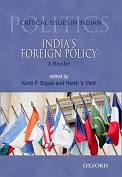


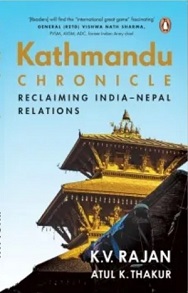

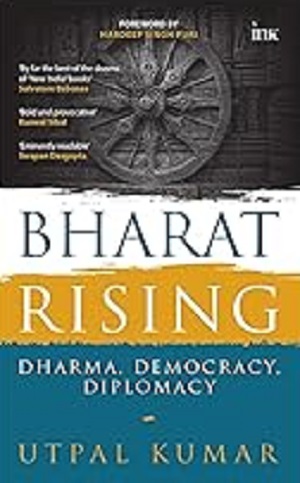
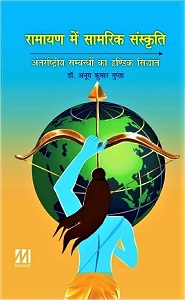
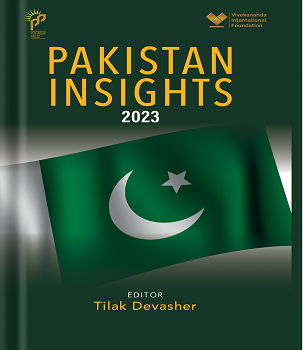
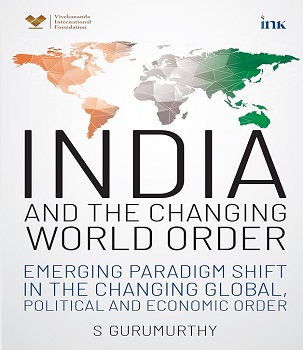
Post new comment